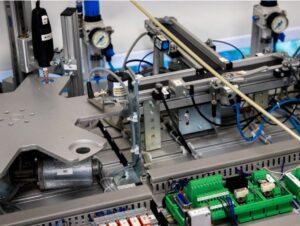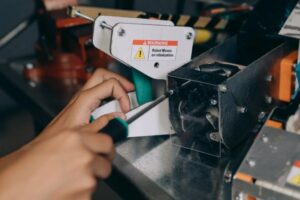
Ten years ago, almost every business that wanted to make something shifted the operation to China. But today, things are different. Re-shoring is becoming more common, and many more people are looking to domestic shores to get things made.
The only problem is that there’s a lack of expertise. Not many people living in the US know how to ensure product quality as it makes its way through the production process. Anything could go wrong at almost any step.
That’s where this guide can help. It explores some of the methods businesses can use to enhance production quality and ensure that products are in the best position possible when they reach end-consumers.
So, what do you need to do?
Define Your Production Standards
You’d be amazed how many businesses strive for high production quality but don’t put the basics like this in place. Defining production standards is essential for anyone looking to make the same widget consistently and to a high standard.
If you can write down these standards in a book or a document, that can be helpful. If you can put it in the cloud where everyone can access it, that’s even better.
Don’t forget to include your inspection requirements, alongside your production needs. The more you can pair the two, the better.
Source Proper Supplies
At the same time, you also want to ensure that you find suppliers who provide you with the quality items you need. Having these available at all times is essential.
The best way to determine the quality of a supplier is, of course, to vet them. Checking they have the critical ability to supply you is a must.
You also want to look over their reviews and see what businesses similar to yours are saying about them. If you see any red flags, then it might be worth looking for another option, at least in the short term.
Train Your Team

If you can train your team to assist with quality control, that also helps. Training them thoroughly is a great way to ensure you maintain quality.
Many companies do this by regularly training on standards and equipment. If these are up to scratch, it makes the business more likely to succeed.
Focus should be on things like defect identification. Sometimes you can produce a batch of products that isn’t up to the standard, but you can’t identify the underlying issue without more training and complete team tools.
The best way to solve this problem is through regular training and communication with team members. Most will look for ways to help you resolve the problem and prevent it from returning.
Collect More Customer Feedback
Of course, customers are also a great source of information for anyone looking to bring production onshore. They can often provide insights that aren’t available through other channels.
Because customers actually use the results of your production, they are often the best people to talk to about real-world performance. The more you can squeeze information out of them, the more likely you are to thrive long-term. You can also identify issues that your internal sources would never give you.
For example, let’s suppose you’re making dice and keep forming bubbles inside the plastic. You may not notice this during the production phase, but it is the sort of thing that customers will tell you. If there’s a problem, upgrading the pressure tanks to something better is usually the right fix.
Keep Testing Prototypes
You also want to keep testing your prototypes to see if you can identify any issues before products make their way into the hands of customers. Getting this step right can save you a lot of time in the future, and reduce the risk of recalls, which are a common event.
You want to confirm the product meets customer expectations early on in the process by inviting people to test your prototype (if you have one). These experts can often provide you with feedback and tell you what customers would like to see from you, and what’s currently working/not working.
Usually, you can identify weaknesses with your current approach fairly quickly. This approach requires you to refine your designs and ensures that the product meets the customers’ expectations, including after extended use. While prototyping might sound excessively rigorous if you sell kitchen bins, it will quickly reveal issues with your products.
Add Standard Operating Procedures
Another approach you’ll want to take is to add standard operating procedures (SOPs) to your operations. These are critical for anyone setting up a manufacturing operation, since it provides staff with meaningful instructions on how to perform operations.
If you don’t apply SOPs, then your manufacturing operation can grind to a halt quickly. Small mistakes can make their way into entire batches, making them unsuitable for the public market.
Standard operating procedures should sit next to physical tools as well as being online for easy reference. Workers should be able to use them as they please, whether they are on the shop floor or in the head office designing new systems.
Use The Best Inputs

Another piece of advice is to always use high-quality materials when aiming for a decent product. Skimping is one option, but not a very good one.
If you’re looking for a shortcut, use materials that other manufacturers have tried using before. These usually have a good track record and will slot into your production processes. New suppliers and materials are higher-risk because they are less vetted throughout the industry.
Overall, you want to ensure that you are clearly defining quality standards. Establishing these for your business is critical if you want it to stand out.
The shape these take will depend on what you produce and what you want your business to achieve. These can guide your production processes and lead to changes in how you inspect your lines. Ultimately, it depends on your business model right now.
We’d always suggest prioritizing quality from the start if re-shoring. Clients expect substandard outputs from overseas competitors, but not those operating domestically.







